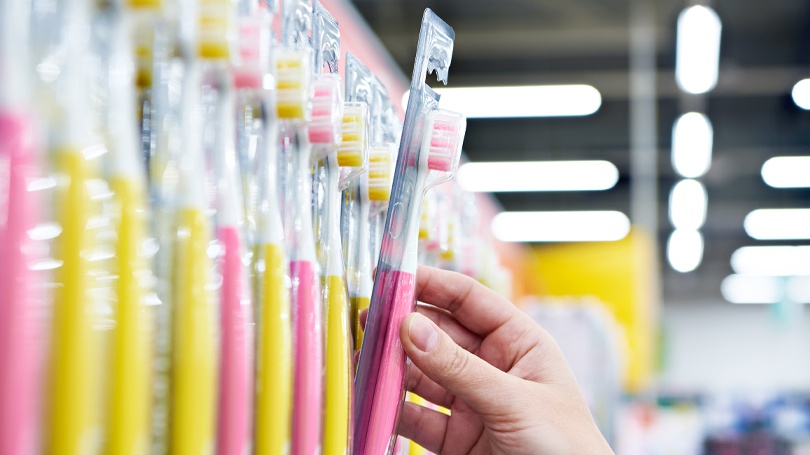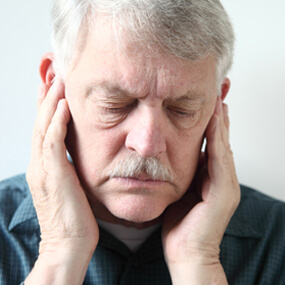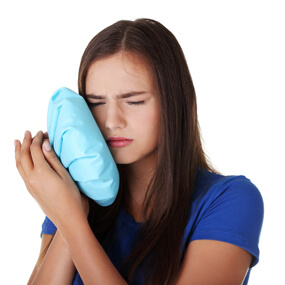How to Choose the Perfect Toothbrush for You

When it comes to good oral hygiene, nothing is more important than brushing your teeth twice a day. The toothbrush you choose is an important factor as well. There are many kinds on the market, and this article will explore those types and the various factors you should consider before making a choice.
Toothbrush History
While the first toothbrush with nylon bristles was not invented until 1938, humans were using some form of a toothbrush as far back as 3000 B.C. The Babylonians would pick twigs and fray the ends, which were then rubbed against the teeth to clean them. The bristle toothbrush was invented in China in 1498 using bamboo and coarse hairs from a hog, but each one needed to be crafted by hand.
Boar bristles were used globally right up until 1938, when the nylon bristle was invented. Dupont—which had invented the Exton bristle—had an exclusive agreement with Weco, and soon, Doctor West’s Miracle Tuft brush was available throughout the United States. Since then, many improvements have been made, including electric toothbrushes and brush heads that fit the mouth more comfortably.
Which Toothbrush Do Dentists Recommend?
There are many types of bristles on the market, including hard, but most dentists recommend soft and may advise extra soft on a case-by-case basis. Soft-bristled toothbrushes are preferred because they serve the purpose and are gentle on the teeth and surrounding soft tissues.
Many dentists recommend electric over manual toothbrushes. Electric toothbrushes often provide a finer and more thorough clean and do it with minimal pressure applied to the teeth and gums.
How Do Hard Bristles Affect Teeth and Gums?
Some people believe that more vigorous scrubbing leads to better plaque removal, but this is generally not the case. Many clinical studies have shown that not only are hard bristles not more effective at plaque removal, but they can also cause unnecessary wear to your enamel and soft tissues.
Tooth abrasion is a serious concern that can lead to permanent tooth structure loss. Even toothpastes with abrasive qualities can accelerate tooth loss. These effects can also be exacerbated by brushing too often—which is why the ADA recommendation was lowered—and brushing too intensely.
One notable study involving almost 160 people found that bristle hardness increased the likeliness of gum recession, which leads to permanent damage. So, the risks outweigh any potential benefits.
Can Toothbrush Design Reduce Contamination Risk?
Yes! Be mindful that toothbrush bristles can host both aerobic and anaerobic microbes. These microbes can lead to various illnesses and diseases, and this is particularly true when oral care is performed by another, such as a nurse in a hospital brushing the teeth of a patient.
Scientists found that disease-causing microorganisms can actually become trapped in toothbrush bristles. Research into this revealed that toothbrush design is a major factor in how effectively and to what extent the bristles become contaminated. Later research spurred toothbrush manufacturers to employ solid handles and to minimize bacterial growth by minimizing surface areas.
Researchers also found that bacteria were better able to flourish when the bristles were closer together. Therefore, the optimal design is two widely spaced rows of soft, round bristles.
Does Toothbrush Shape Matter?
Yes. Form can play an important role in how effective your brushing is. The ideal handle is flexible and easy to maneuver. The easier you can use your toothbrush, the more effective your brushing will be, particularly in the posterior areas of the mouth. Flexibility also means less impact on your oral tissues. The brush should also have a small enough head to be used in your mouth comfortably.
How Often and Hard Should You Brush?
The modern recommendation is that you brush twice a day—once after breakfast and again before bed. After other meals and snacks, you should rinse vigorously with water to dislodge trapped food particles. When you brush, be mindful that you can still cause damage no matter how soft your bristles. Gentleness is key in order to avoid disrupting the enamel that protects your teeth.
Should You Sterilize Your Toothbrush?
Yes! But be mindful that sterilization is not an alternative to replacement. Replace your toothbrush about every three months or when you can see frayed bristles. Dentists recommend sterilizing your toothbrush once a week. Fill a bathroom cup or similar with hydrogen peroxide. Submerge your toothbrush head, and let it soak for several minutes. Rinse with water. Shake off the excess, and let the toothbrush air dry before using it to brush your teeth.
Brush Well for a Healthy Smile
Selecting the right toothbrush and brushing—as well as flossing and rinsing—on a regular basis is imperative to good oral health. But you also need to see your dentist. Regular visits let your dentist remove any plaque you missed as well as spot minor issues before they become something more serious. Jeffrey D. Clark, DDS, his dental hygienists, and the rest of his team at Scottsdale Cosmetic Dentistry Excellence can provide the care you need. Call us at 480 585 1853 to schedule your appointment.




